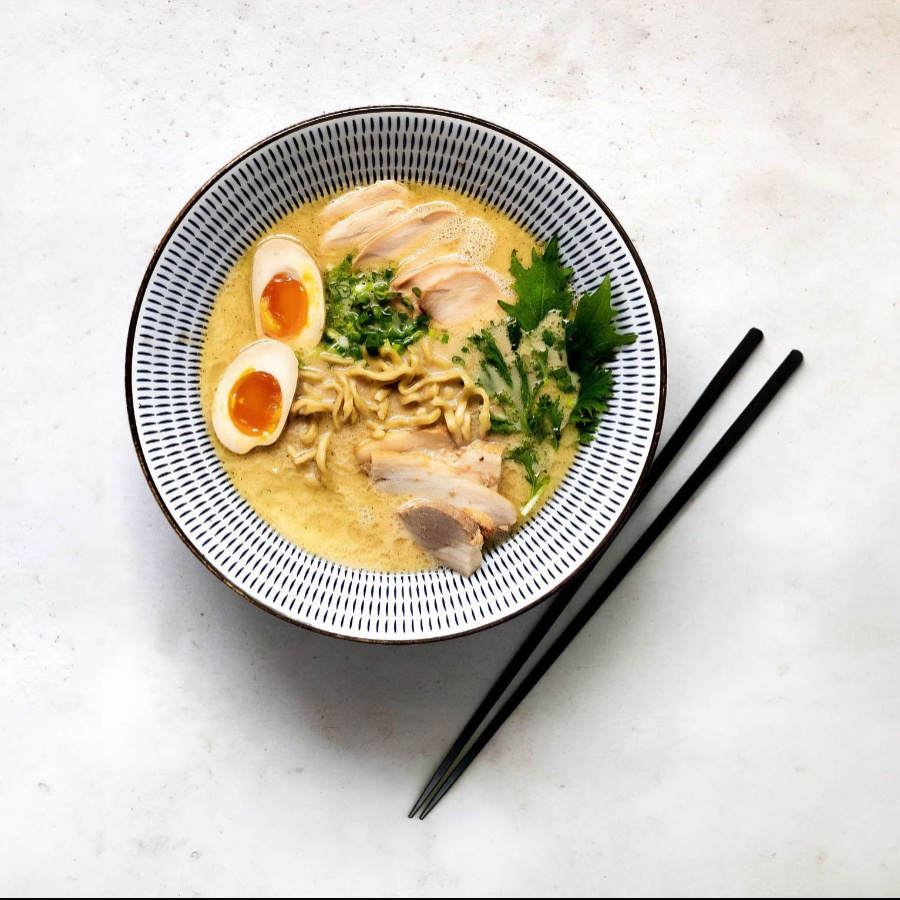Something in the air
In Mumbai, where he lived before, restaurant life was starkly different, in terms of not just produce, but also routine and lifestyle. “In cities, everybody's running,” he says. “So I’d have five meetings a day alongside running a restaurant and doing 10 other things. It was draining. A lot of times, you just wake up and struggle to go to work.” The physical labour of working in a kitchen—the heat, the pace, being on your feet for hours on end—has other repercussions, too. “When you’re running a high-end restaurant in any city, everybody’s trying to push to get more done, which often results in a lack of empathy, respect, and care.” Long story short: everyone’s overwhelmed.
At Darwa, he says, rest is easier to access. “I wake up excited.” His days begin in the chilly hours of dawn, with a mug of hot water with ginger and apple cider vinegar, sipped on the balcony of his residence. Soon enough, he is at Naar, prepping for the day ahead. “I’m a cook, an accountant, a firefighter, sometimes a counsellor. I work on menus, plan events, and speak with suppliers: Oh wood is over now, so we need to figure that out.”
Despite the fact that there is always something happening, the energy is very different. “Obviously, the air and water have a big role to play. These things make a big difference to energy levels, and what you bring to the work. I think the best sleep that I’ve got is in the mountains.”
Smells like team spirit
Naar’s team doesn’t just work together, it also lives together, which, Sadhu says, changes the dynamic. The women live in one farmhouse, the men in another, and Sadhu’s accommodation, much like the place of an observant headmaster, is plonked in between. There are kitchens in each space, and all lodging is within five minutes of each other and the restaurant. Every morning, the crew is picked up in a car, and taken to work together, much like a school bus. “It’s very different when you are living in a hostel-like situation, away from your families, in a remote location without Amazon or Swiggy or Instamart. At night, we’re cooking together, washing clothes, figuring out the washing machine situation. Everyone has each other’s back in a different way.”
Creating a sense of community seems important to Sadhu, whose way of running a restaurant is informed by the years he’s spent in kitchens around the world. He studied at The Culinary Institute of America, worked at Michelin-starred restaurants abroad, including Alinea and The French Laundry. Then he returned to India, where, in 2016, he opened Masque, a fine-dining restaurant in Mumbai that presents Indian ingredients and techniques in a modern way.
Naar is similar in its outlook, but the playground for exploration is limited to the Himalayas. “Modern Indian food is great, it’s what I’ve been doing for years. Now I’m interested in a cuisine that tells the stories of a specific region. I feel it is more relevant. That's how we all build together.” This echoes the approach of many celebrated restaurants around the world, such as Noma in Denmark and Central in Peru, where food is rooted in geography, ecosystem, and culture, and meals are a reflection of the biodiversity of the region. At Naar, most of the ingredients are locally sourced within 50km of the restaurant, though ironically, its diners fly in from different parts of the country, and the world, often for just a meal.
The menu changes with the seasons, “so the plate echoes the landscape”. Naturally, there’s no seafood, but plenty of fresh trout, local cheese, fiddlehead ferns, and wild berries, depending on the time of year. “In spring, we walk in the garden, climb up the mountain, observe what’s happening around us. We see pine trees, we see that the young pinecones are coming up and think, maybe we can put some in honey. In other restaurants I’ve worked at, this process would play out in an air-conditioned box, mostly on the phone,” he says, still amazed that he gets to do this.
Come together
Sadhu says that his biggest learnings have come from eating in people's homes, talking with them, understanding how they use ingredients and where the produce comes from. “We talk of India as a land of spices, which it is, but in the mountains, there is little concept of powdered spice. Here, they use fresh chillies, fresh cardamom, fresh bay leaf.” Since so much of the produce is sourced locally, the quality of ingredients is far superior. “The kind of hing (asafoetida) found here is just phenomenal. Mountain hing is sticky, like honey. Everything tastes different from what people stereotypically expect.”
Sadhu is also captivated by the ways in which the weather shapes cuisine from this region. Preservation and nose-to-tail eating, for example, are an essential part of Himalayan cuisine, necessitated by the harsh climate in the region. “Sausage culture is big!” he says. “When we think of sausages in India, we think of Goa, but the Himalayas have a vibrant culture of preserved meat, like blood sausages, comparable to charcuterie from Europe. These are the stories that fascinate me.”
There is a dish on Naar’s winter menu called Sunderkala, inspired by a breakfast dish from the Bhotiya community of northern Uttarakhand. Sunderkala, also called kukla, is a kind of hand-pulled noodle dish served with meat, vegetables, and a tempering of wild onion and garlic greens. An integral part of the local cuisine, a testament to the long history of trade between the Bhotiyas and Tibet, and yet, “the popular sentiment is that noodles are not Indian food,” says Sadhu. “But if you look at food in this way, we have to write off everything. I mean, what is Indian food, anyway? These are the stories we want to tell, the kind of points we are trying to make, and our medium is food.”
At Naar, most of the ingredients are locally sourced within 50km of the restaurant, though ironically, its diners fly in from different parts of the country, and the world, often for just a meal.
Chef’s table
His personal relationship with the Himalayas traces back to his birth. He was born in the Baramulla district of Kashmir, located near the Line of Control. “When I think about my parental house, I remember growing up near paddy fields, and jumping from one field to another. During our school breaks, my cousins and I would go to my nani's house where the ground was covered with at least 5-6ft of snow.”
In the early ’90s, when he was six years old, his family left Kashmir for Delhi, because of violence and political disturbance in the region. “I am very drawn to mountain food, not just because I’m from Kashmir, but also, because I come from a refugee family. This is not something that my forefathers experienced, it is my first-hand experience.”
In Delhi, his mother was strict about two things: that they spoke Kashmiri at home and they ate Kashmiri food for all meals. “She always said, ‘food and language define your identity. You have to hold on to that, and you, especially, have to hold on to that because you are displaced. You’re not in Kashmir, but your identity is that you are a Kashmiri. So remember that.’” Memories of Kashmir were frequently shared around the dining table, or when his mother was cooking, cementing the bond between food and storytelling. “I’m only now realising the depth to which those stories and her food have shaped me as a chef,” he says.
So Naar, in many ways, is a return to the mountains for Sadhu. An opportunity to share the stories and cooking he grew up around, a way to retain his connection with the Himalayas, to revel in the wonders of its varied habitats. “The mountains are a safe space for me. They have given me so much: friends, inspiration, ingredients, recognition. Mountains are where I feel I belong. Why does one feel that way? I don't have that answer for you. It just is.”
Address: NAAR, Amaya, VPO, Darwa, Kasauli, Himachal Pradesh
Reservations: Email reservations@restaurantnaar.com or call on +91-8800422053. Multi-course tasting menu for ₹6,500 without alcohol, ₹11,000 with cocktails, and ₹13,000 with wine pairing











